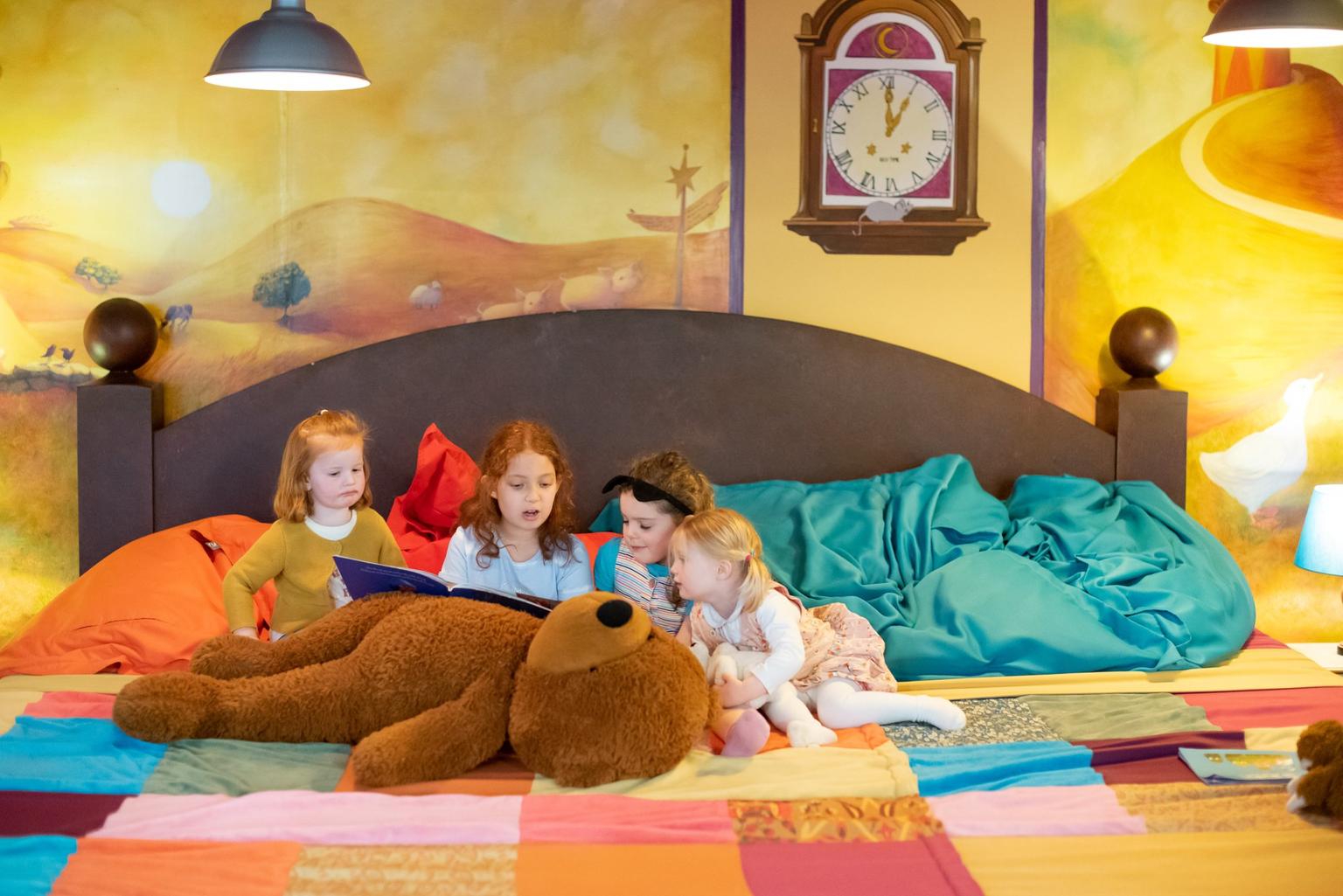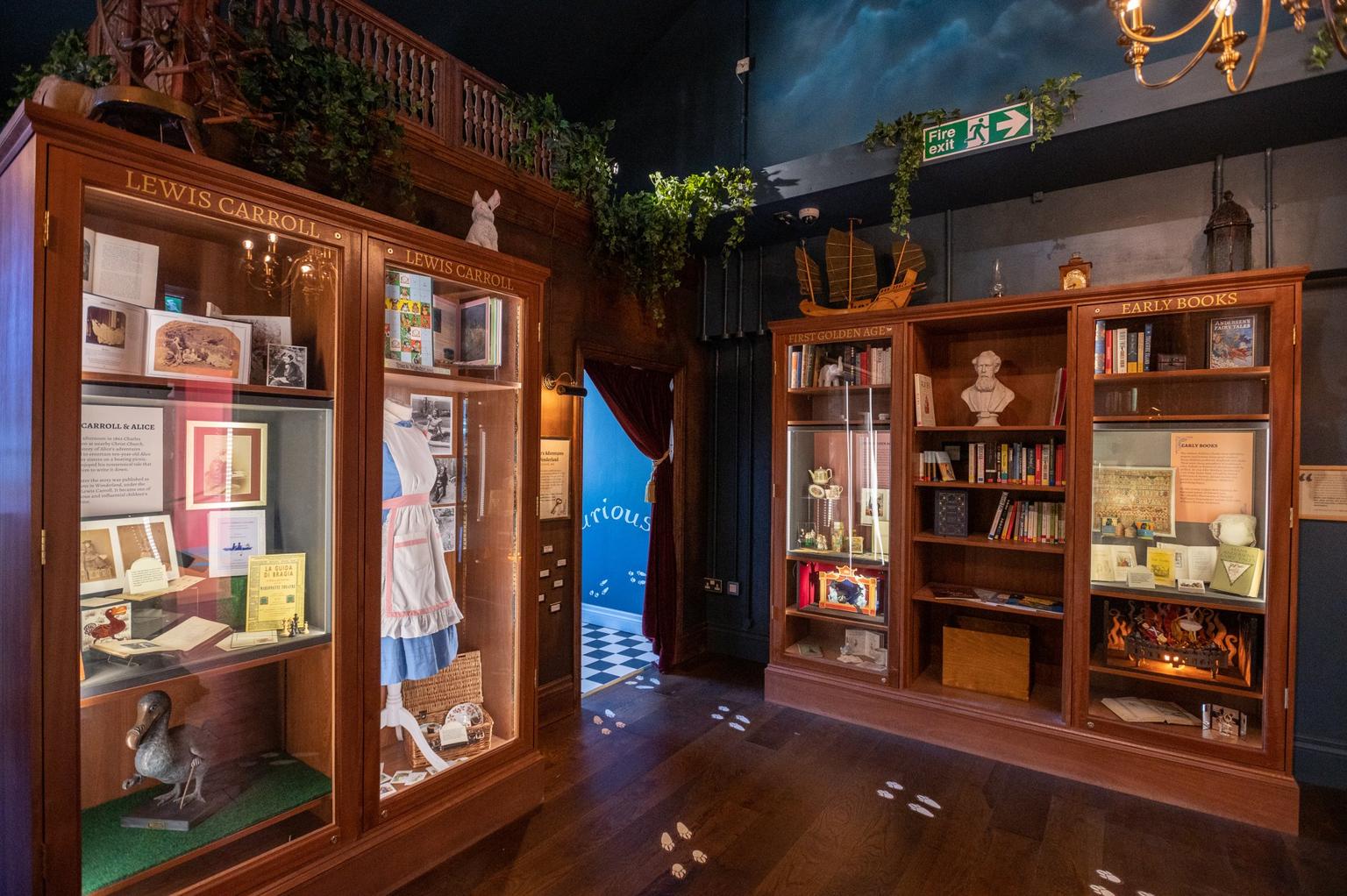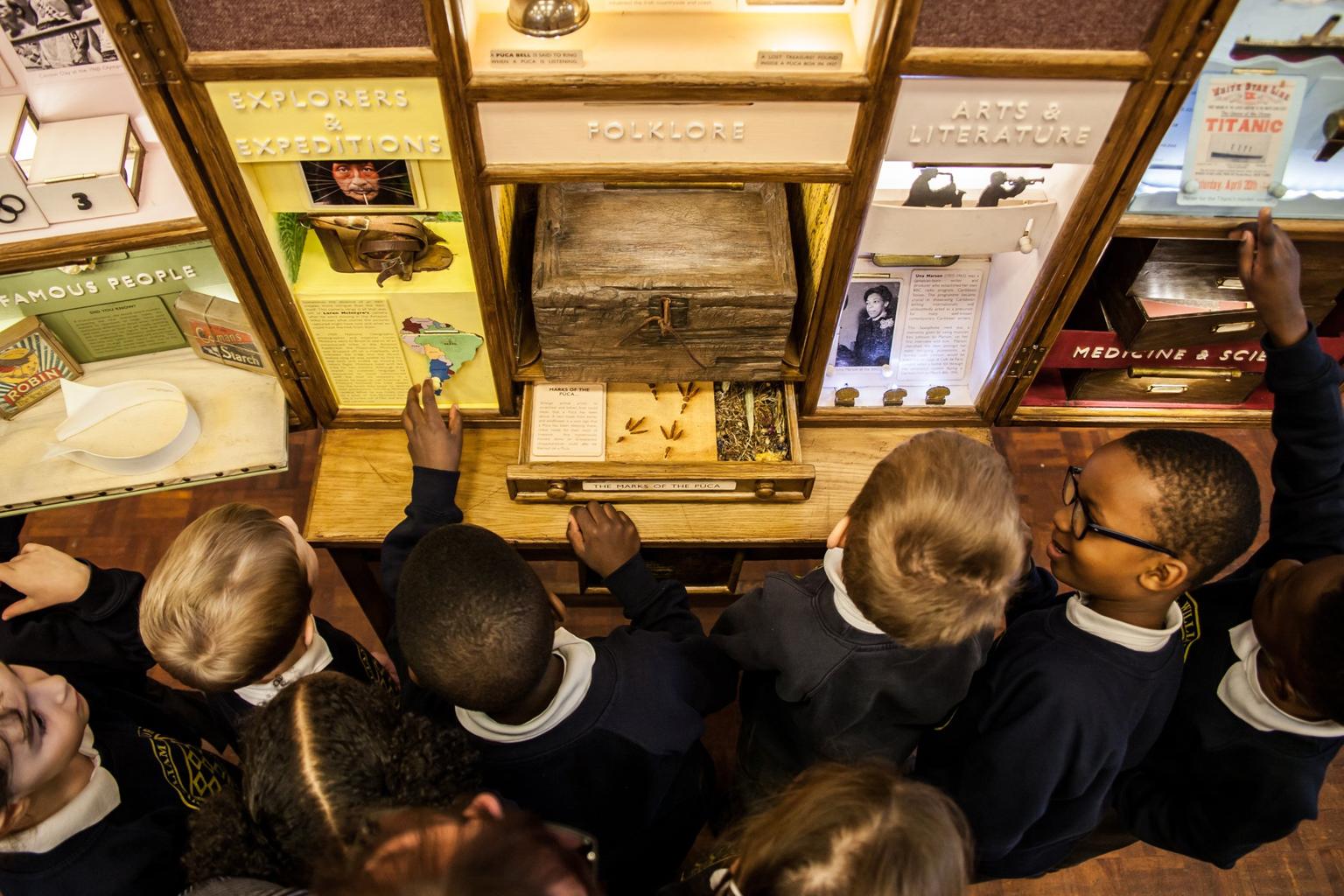Discover the museums putting children front and centre

As Young V&A prepares to open after its transformation from the former Museum of Childhood, David Trigg explores how giving young people agency as co-creators of museum experiences is the blueprint for inspiring a lifelong relationship with our institutions.
According to the Victorians, children were to be seen and not heard. Such was the prevailing attitude when the Victoria and Albert Museum (V&A) opened in 1852 with a mission to educate designers, manufacturers and the public in art and design. The idea that children should have a voice in the museum, let alone be recognised as independent thinkers whose insights make a valuable contribution to our world, would have seemed absurd in 19th-century Britain.
Just as attitudes towards children have shifted significantly since then, so too has museum practice, which today increasingly recognises the value of listening to and involving young audiences as co-creators of art and culture. Young V&A, an exemplary child-centred museum for the 21st century designed with and for young people, opens later this summer. Its reframing of the museum as a creative laboratory aims to inspire the next generation of artists and designers through a celebration of play, experimentation and discovery.
Located in London’s Bethnal Green, on the site of the former V&A Museum of Childhood, Young V&A is the result of an ambitious seven-year, £13 million capital development project that has totally transformed the Grade II listed building. ‘We could see that the idea of a museum of the material and social culture of childhood, while very popular, was out of date,’ explains Helen Charman, director of Young V&A. ‘Anyone who is working in early-years education understands that playful learning and creativity is absolutely intrinsic to the development of critical thinking, communication, collaboration and problem-solving. The old museum wasn’t really doing anything directly for or with children; we wanted to create a child-centred museum that would promote creative play, spark imaginations and foster creative agency in the lives of the young.’
Children have been intrinsic to Young V&A’s development, working with architects as well as curatorial staff, designers and artists in the production of exhibits and displays. ‘It’s been a real learning journey for all of us,’ Charman says. ‘We worked with local classes from Bangabandhu and Globe Primary Schools, with children and teachers from Morpeth Secondary School and young people from Spotlight Youth Centre in Bow.’
Allowing the museum to be shaped by the interests and needs of young people has resulted in three themed galleries for early years to early teens. Titled ‘Play’, ‘Imagine’ and ‘Design’, each one is packed with interactive activities, inspirational displays and hundreds of objects from the world-class V&A collections. ‘Everything is brought back to the collections because that’s what makes the museum,’ Charman explains. ‘Young V&A is a “doing” museum – a joyful, buzzing, and optimistic place underpinned by the power of design and creativity.’
We’ve found completely new ways of displaying objects and making them relevant to babies and young children.
Drawing from the latest early-years research, the Play gallery features a sensory playscape designed to stimulate physical exploration. ‘Babies and young children are learning all the time,’ says Charman. ‘The majority of cognitive development in those key early years happens through playful learning, so colour, sound and texture are particularly important in this gallery.’
Within the Play gallery is the Mini Museum, designed around objects from the collections. ‘That’s been really exciting because we’ve had to find completely new ways of displaying objects and making them relevant,’ enthuses Charman, explaining how tactile display cases have been designed to entice pre-schoolers. ‘If there’s a sparkly object inside, it’ll be in a sparkly case, or if it’s made of marble, then children will be able to feel the texture of marble. There’s also a sound tree that brings to life objects and 2D work with audio, including a wonderful David Hockney print evoking the sound of rain.’
For primary schoolchildren, the Imagine gallery promotes storytelling and artistic expression by showcasing objects and costumes from the Theatre & Performance collection. One key element is the Living Together space with its installation of doll’s houses from the National Childhood Collection, exploring what it means to live in a community. ‘The houses are displayed on a street scene, including playful interactive elements and an exhibit co-produced with architect Émilie Queney, which brings in the idea of lived experience,’ Charman says. ‘Our 1935 Art Deco Whiteladies House now has a sound element: you can hear a party going on inside.’
Visitors will also find the photography display ‘This Is Me’, with portraits co-created by local young people and photographer Rehan Jamil, showcasing children’s creativity and self-expression. ‘There are some beautiful images, including a boy in his cooking apron, which is flying out behind him like a superhero’s cape.’
The Design gallery caters for young teens, where visitors are invited to step into the shoes of a designer. The focus is on critical thinking, curiosity, understanding how objects are made and how design affects our lives. The gallery includes films, interactive case studies, the Factory space demonstrating different design processes, and an open studio where children can respond to or create their own design briefs.
For young gamers, a Minecraft installation in the Arcade space introduces young people to the world of video-game design, while the role of design in giving voice to people and issues, from feminism to climate change, is explored in displays of historic and contemporary works of art by artist activists. ‘We hope that Young V&A will be an inclusive, accessible and welcoming space for young people to claim as their own, where they can visit after school and always find something to do,’ Charman says. ‘That’s how the museum will become genuinely child-centred – in the way it is experienced and used.’
The museum is very hands-on and interactive, giving children and families a way into the magic of stories.
The child-centred ethos underpinning Young V&A stems from pioneering educationalists such as Loris Malaguzzi in post-war Italy and British architect Simon Nicholson, who believed that children learn most effectively in laboratory-style environments, where they can explore, experiment and discover for themselves. ‘Maria Montessori believed that play is the work of the child, so if you frame everything within that context, the learning will happen,’ says Charman.
The work of contemporary practitioners, such as Kathy Hirsh-Pasek and Alison Gopnik, along with numerous other expert advisers, has been instrumental to Young V&A’s development. As Charman points out, behind the fun and games is a serious educational endeavour. ‘Everything at Young V&A has incredibly serious intent beneath it and is informed by relevant practitioners and theorists, but everyone will be having a lot of fun.’

Storytelling is one of the oldest and most powerful ways that children learn. The creative power of stories is celebrated at Young V&A with a storytelling stage and story prompt generator in the form of a wacky, Heath Robinson-style machine that is designed to kickstart children’s story writing. The benefits of stories to human flourishing are also celebrated at the Story Museum, a child-centred museum in the heart of Oxford, which has been enriching young lives since 2003, and was shortlisted for Art Fund Museum of the Year 2022, following a major refurbishment the previous year.
‘Stories are integral to our lives,’ says Daniel Clark, the director of creative programme at the museum. ‘They are portals for building empathy and an understanding of the world.’ Visitors to the museum will find a host of immersive exhibitions and multisensory activities inspired by some of the world’s best-loved stories. ‘It’s not a traditional museum where you just look at artefacts,’ explains Clark. ‘It’s very hands-on and interactive, giving children and families a way into the magic of stories and helping them to create their own’.
A popular exhibit is the Enchanted Library, which invites you to literally step inside a story. From parting the fur coats and entering writer CS Lewis’ Narnia through a magical wardrobe, to peering into the mysterious rabbit hole from Alice in Wonderland, everything here invites you to play and explore. The newest exhibit is a Choose Your Own Adventure room, a giant game inspired by the popular children’s series of the same name. Children assume the role of a spy, time traveller or space adventurer and go on a journey of discovery, encountering all sorts of hidden surprises along the way.
Children are the best audiences, because they are so honest.
Driving the Story Museum is a desire to help young audiences engage with stories, from enabling children who already love them to experience worlds they’ve only imagined, to inspiring those for whom stories are not yet a regular part of their lives. ‘We’re convinced that engaging with stories makes for a better, happier and more fulfilling life,’ says Clark. Co-creation is also high on the agenda and children are regularly consulted on what they would like to see at the museum. ‘Every aspect has been developed in close consultation with children,’ he explains. ‘This stretches from consulting on books and objects in the collections, through to involving young people in the development and design of our spaces. Working with children is essential to make sure that our exhibits and collections are as engaging and representative as possible.’ This approach allows the museum to gain valuable insights that help drive the quality of the visitor experience while offering skills development and opportunities to children that aren’t available at school.
‘Children are the best audiences, because they are so honest,’ says writer, performer and director Tara Boland, whose work, including with theatre producer Punchdrunk’s educational and community charity, Punchdrunk Enrichment, has created imaginative and immersive experiences for young people in schools. Boland has also worked with Art Fund on its project The Wild Escape, which is inspiring creativity in children and young people across the UK, on the subject of biodiversity loss, by inviting them to seek out and make their own image of an animal depicted in a museum or gallery collection. Boland’s project, ‘Find Our Forgotten Creatures’, an audio guide and activity sheet, is running at museums across the UK for the summer term. At the time of writing, Art Fund was building up to The Wild Escape’s big moment on Earth Day, on 22 April, and the unveiling of the major digital work of art featuring all the children’s creatures. ‘It is really exciting to be part of a project that is giving children the opportunity to interact with collections and choose what they think is important in them,’ enthuses Boland.

‘This is about museums and galleries stepping back, offering an activity that children can do themselves, and then having their work celebrated,’ she says. ‘With Art Fund’s The Wild Escape, the child’s contribution and imagination are pivotal. It’s about making children feel they have a place in their local museum and that their artworks are needed and valued.’ While children are central to Boland’s immersive experiences, adults are also integral. ‘For children really to engage, there needs to be space for their thinking, curiosity and questions,’ she says. ‘If you want to change how children experience institutions, you have to start by working with the adults, changing the way they see their practice and challenging the power dynamics.’
Similarly, while the interests of children are foundational to Young V&A , the museum aspires to be a place that empowers educators to promote creativity as vital to teaching and learning. ‘Teachers are the experts,’ Charman says, explaining that all the activities at Young V&A have been rigorously tested by educators in addition to children. ‘Teaching is probably the most powerful job on the planet and so working with teachers as advocates who will promote the museum as a resource is also really important.’
One trend identified by Mindsets for Museums of the Future, a 2020 report commissioned by UK Research and Innovation, is community connectedness. Museums are developing deeper understanding of their audiences’ needs, and creating relevant, visitor-centred content and experiences. This is essential to child-centred museum practice, where the transmission of culture is replaced by participation, co-creation and a sense of ownership.
As Charman notes, Young V&A models the idea that ‘museums can be spaces for children from the earliest years of their lives, rather than spaces they somehow have to grow up into’. Henry Cole, the V&A’s first director, once declared the museum should be a ‘schoolroom for everyone,’ and while Young V&A would no doubt be unrecognisable to him as a schoolroom (and he might need some convincing over its play-led ethos), he would surely commend its mission to educate the next generation through a commitment to collections-based learning.
Young V&A, London, opening 1 July. Free to all.
The Story Museum, Oxford. 50% off with National Art Pass.
Listen to ‘Find Our Forgotten Creatures’, and upload your animal, at The Wild Escape.